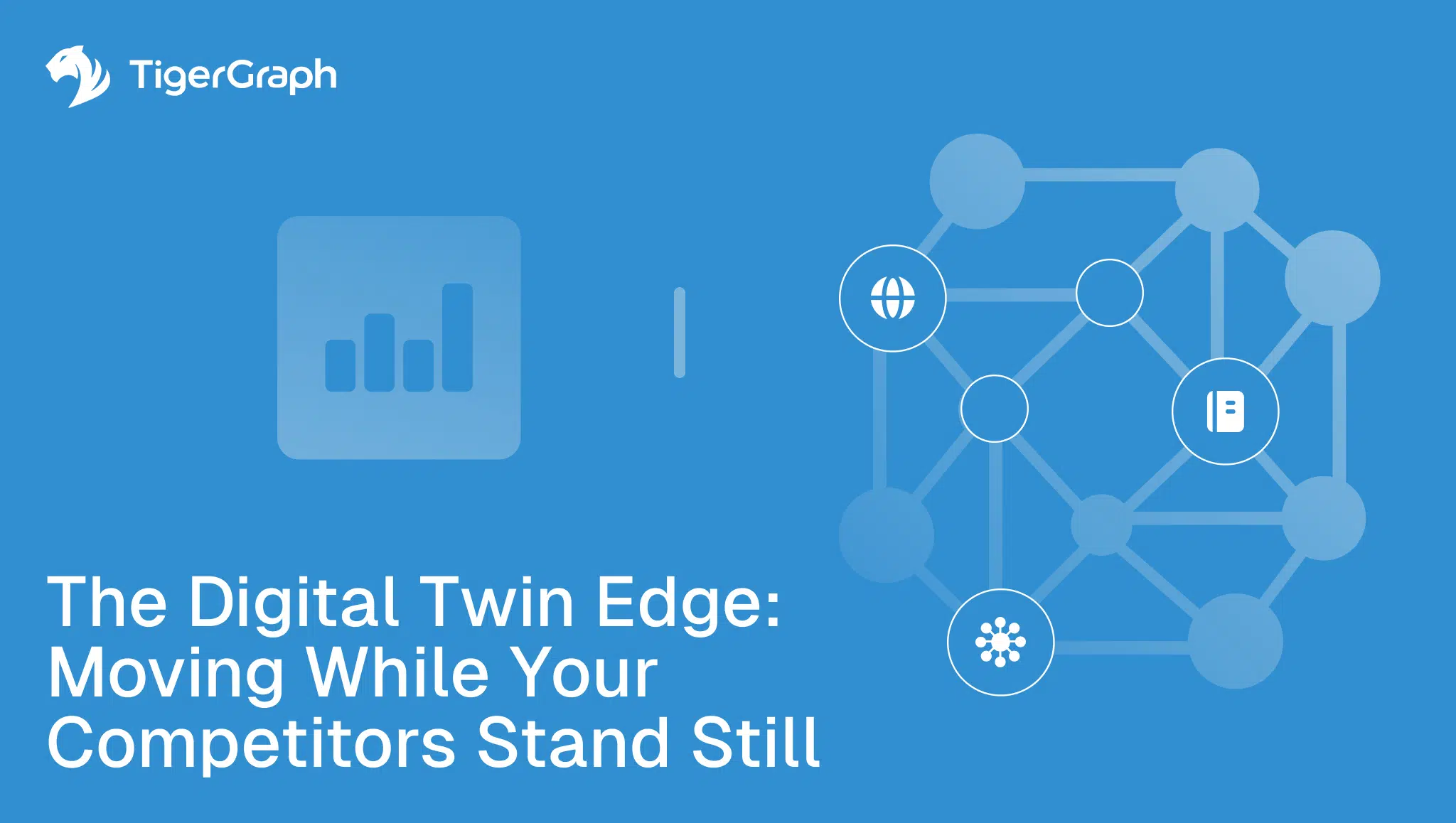The Digital Twin Edge: Moving While Your Competitors Stand Still
In fast-moving markets, standing still isn’t safe—it’s surrender. Many companies still hesitate to move quickly, believing it’s safer to wait than to act too soon. In today’s digital landscape, that mindset is risky, and nowhere is it more damaging than in how digital twins are used.
A digital twin is a virtual representation of a physical system, like a factory floor, power grid, or supply chain, continuously updated with real-time data. It’s meant to give teams a live, interactive model to understand operations and test decisions before making them in the real world.
But digital twins haven’t lived up to that potential in many organizations. Instead of helping teams plan for what’s next, they’re stuck showing what already happened—static dashboards that reflect the past, not the future and what could happen. And in volatile markets, that’s not insight—it’s inertia.
Disruptions ripple across systems in milliseconds, so digital twins must do more than mirror. They must simulate, predict, and explain. The shift from reactive snapshots to dynamic, scenario-driven systems requires technology that understands connections, causality, and change over time.
Graph databases provide that foundation.
Unlike relational systems that silo data in rigid tables, graphs map how people, systems, events, and outcomes interrelate. They make it possible to model not just assets, but the behaviors and dependencies between them. That’s what elevates a digital twin from static to strategic.
But modeling alone isn’t enough.
TigerGraph takes graph technology further by delivering the speed, scale, and built-in analytics that digital twins need to operate in real time. With native support for multi-hop traversal, in-graph computation, and streaming data ingestion, TigerGraph turns connected models into intelligent simulators—capable of forecasting change, surfacing risk, and guiding decisions before competitors even see them coming.
That’s the digital twin edge. And the time to build it is now.
From Static Twins to Strategic Simulators
Digital twins were once revolutionary: virtual replicas of physical systems or assets, continuously updated with real-world data. But many implementations have grown passive, limited to visualization, monitoring, or alerting. They show what did happen instead of showing what should happen next.
To move from passive insight to proactive strategy, organizations need digital twins that model interactions, not just states. They must show how systems evolve, interconnect, and influence one another over time. This requires a connected understanding of cause and effect, which is a capability that only graph technology can deliver.
Graphs don’t just store entities, they encode relationships. They represent how things connect—logically, operationally, and temporally. And in complex enterprise environments, it’s those connections that define impact.
With a graph-based digital twin, teams can:
- Map cascading effects of changes across people, processes, and assets
- Simulate real-world dependencies in milliseconds using multi-hop traversal
- Uncover vulnerabilities before they become bottlenecks or breakdowns
- Model probable outcomes, not just possible ones, based on how systems behave in context
These aren’t hypothetical scenarios. With TigerGraph, digital twins can simulate factory shutdown risks, reroute logistics in real time, and proactively rebalance supply across global networks—helping organizations act before disruptions become costly.
Thinking in Futures, Not Snapshots
Most digital twin platforms show you what’s happening now or what happened yesterday. That’s useful, but it’s not enough. In volatile environments, success depends on exploring what might happen next and preparing accordingly.
Graph-powered digital twins give strategy teams that foresight. They act as dynamic sandboxes where decision-makers can test “what-if” scenarios without brittle rule sets, manual updates, or batch-job latency. They let you simulate changes, evaluate cascading consequences, and adjust before disruption becomes reality.
Consider these real-world scenarios:
- A telecom provider anticipates a network traffic spike in one region. Instead of waiting for congestion to trigger alerts, it proactively reroutes traffic, using real-time graph traversal to assess bandwidth availability, user density, and service dependencies across the entire system.
- A smart factory experiences a delay on a critical part. Rather than stalling production, it uses a graph-based twin to instantly trace all downstream processes affected, simulate re-sequencing options, and choose the path that minimizes downtime and cost.
- A retailer wants to predict demand more accurately. Instead of relying solely on past purchases, it analyzes live customer behavior across web, mobile, and in-store interactions—identifying emerging preferences and adjusting inventory and promotions accordingly.
Each of these examples depends on data and the ability to reason across connected, evolving systems. And this is where TigerGraph stands apart.
TigerGraph’s graph-native engine is designed for high-speed, high-scale reasoning. It supports real-time ingestion, deep-link analysis, and in-graph algorithmic computation across billions of relationships. With TigerGraph, digital twins become more than passive models—they are live, decision-ready systems that can ingest streaming data from sensors, services, and platforms to stay continuously updated. They use graph algorithms like shortest path, community detection, and influence scoring to simulate decisions and analyze trade-offs. And because business logic and behavioral norms can be embedded directly into the graph, there’s no need for brittle workflows or detached rule engines.
TigerGraph doesn’t just help you analyze patterns. It helps you model what’s typical, simulate what’s plausible, and act on what’s probable—before your competitors even see it coming.
Don’t Just Mirror Reality—Model What’s Next
A digital twin that only shows what’s happening now is no better than a mirror. True digital twins should be strategic engines: continuously updated, deeply connected, and capable of helping you think ahead.
With TigerGraph, your digital twin does more than visualize the present. It ingests real-time data, simulates complex dependencies, and tests what’s possible—so you can make smarter decisions before others even recognize the need to act. It helps you understand what happened, why it happened, what might happen next, and what to do about it.
And that brings us full circle. In a world where competitors are watching and waiting, standing still is surrender. The companies that lead won’t be the ones who react faster—they’ll be the ones who reason faster, plan earlier, and move first.
That’s the digital twin edge. And the time to build it is now—with TigerGraph. Reach out today to learn more and get started!

